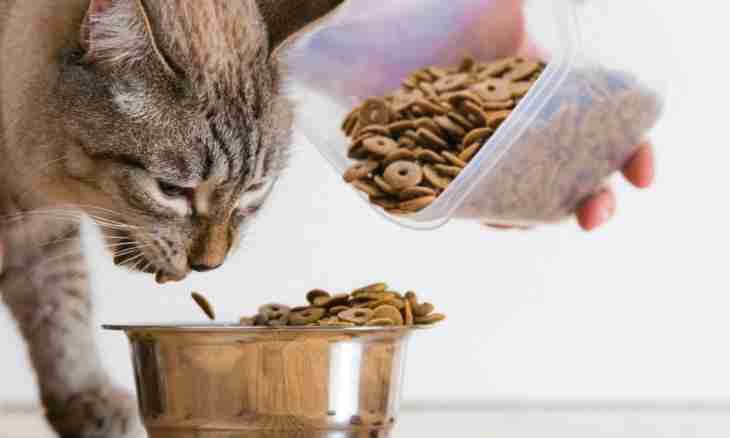If you decided to feed the cat with a dry feed, it is necessary to approach its choice very responsibly. Health and good mood of your pet will depend on structure and balance of all its components
Why the dry feed is necessary
It seems to you that only inveterate monsters and idlers can feed a cat with unclear crackers? It at all not so. The fact is that the qualitative dry feed is completely balanced on the structure and contains all nutrients, vitamins and minerals necessary for your cat. You, certainly, can feed the pet with fresh cutting or pair milk, but most of owners is not able provide various and good nutrition thus. The forage solves this problem quickly and without efforts of you.The important aspect – is simpler to add any given medicinal components or substances to a dry feed. It is especially relevant during the choosing of clinical nutrition or selection of a diet for your pet. Besides, it is really more convenient to feed an animal with a dry feed: it is longer stored and does not spoil in a bowl.
Structure of dry cat foodAll aforesaid is relevant for a qualitative forage. Unfortunately, not all producers of food for animals, do forages really useful and balanced. To understand how qualitative forage before you, attentively study its label. At a good forage there will be following ingredients: meat (meat, but are not blown animal origin), cereals and vegetables (no more than 50%), vitamins and minerals (the list has to be long). Also pay attention to that preservatives and antioxidants as a part of a forage were natural (for example, vitamins E and With and also extracts of herbs and oils).
Harmful and undesirable components of a forage
And here what in cat food should not be, so it artificial dyes and preservatives. Some producers add to sugar forages to improve their poyedayemost and structure. Such additive is not useful to animals at all. Sugar causes caries, besides, is harmful to digestive system of a cat. It is necessary to prick up the ears also if you notice animal components of doubtful origin in a stern. For example, the processed beef skin or turkey flour. Even if on packing it appears "offal", know that it that other as a trimming and waste of meat-processing productions. Cases when unfair producers do a forage literally of horns, hooves and feathers are frequent. Avoid forages as a part of which there is a cellulose or a shell of nuts – these ingredients cause imaginary sense of fulness, without providing with nutrients.

